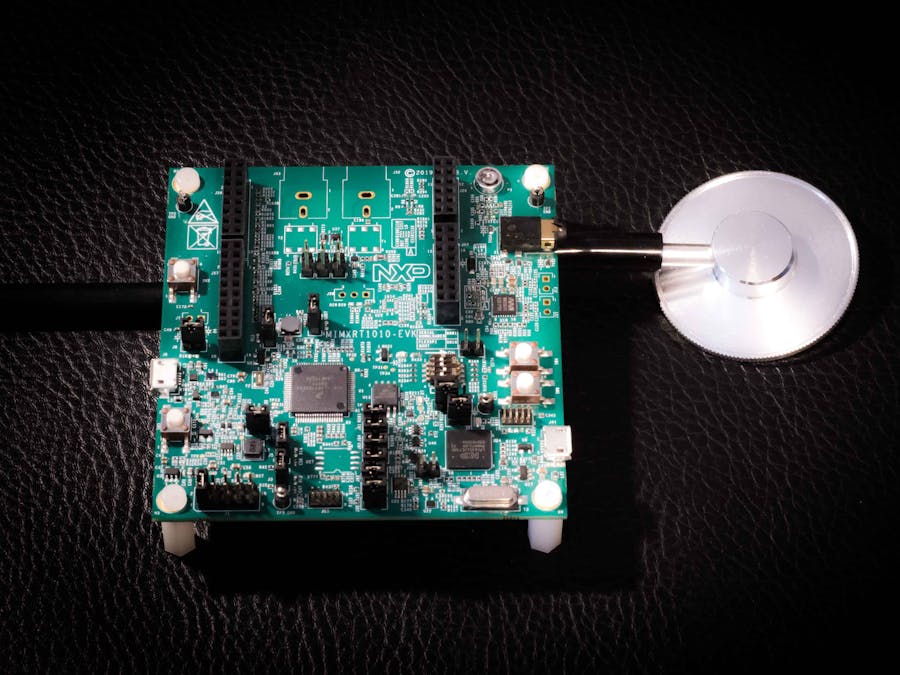An analog stethoscope that you’ve probably seen many times before you went to a doctor, is a clear sign that your cough is treated by a professional.
You probably assumed, that these things saved many lives and therefore is nothing wrong with these items. Fortunately, that’s all true, but can we do better with modern, sophisticated microprocessors like the i.MX RT1010?
The answer is, we can dramatically improve in the following areas:
- If you are using an analog stethoscope for the first time, you will be surprised how low the volume of such a device is. Having an volume control at an analog device might be a little challenging but it is a peace of cake with the digital version. A big help for someone how requires this!
- Even the best expert might have a situation when he is unsure what he or she is hearing. Recording the sound and sending it away to get a second opinion will make the digital version possible. This features is also very useful in areas where the next doctor is fare away.
- A picture says more then thousand words is always true. And a visualization also provided here additional information.
- Not every part of the spectra is needed or even useful. It is a nice function to focus on the part of the signal that contains the information and to remove frequencies out of interest. Additional you also want to hear the parts of lower volume more clearly, but also don't want your ear to blow away when a high-volume signal suddenly appears. This brings us to the final advantage: We can have fun with real time audio processing!
First you need an simple stethoscope. These are available for a few bucks.
Close one tube with a stripe. Make sure, it is closed hermetic.
Then the tube is connected with a heat shrink tube to the i.MX RT1010.
Finally a headphone is connected and the setup is ready.
See it in actionHear and see the heartbeat in this video (stored at dropbox)
Different modes of operating are implement. Use the user button sw4 to switcht between:
Mode 0: No audio manipulation. Proper for first setup. The signal is very noisy.
Mode 1: Band pass filter between 20 Hz and 800 Hz is applied. The signal is less noisy but also very low.
Mode 2: Additional audio amplification with tanh (Blue). Now the low gain part are amplified. The heatbeats are clearly visible.
Mode 3: Additional audio amplification with higher slope of tanh is applied (red).
On the picture below there is show the non linear amplification for the audio signal. In the strongest amplification the low volume parts are heavenly amplified.
This prove of concept shows how easy it is to build a digital stethoscope and all what is needed would easily find place in a matchbox. It also showed how powerful the i.MX RT1010 is.
Sources: https://github.com/DevelopMan303/imxrt1010_stethoscope
Disclaimer: Although these results are impressive, it is still a prove of concept and must never used for any medical examinations at all! In short, no warrnty at all.



Comments